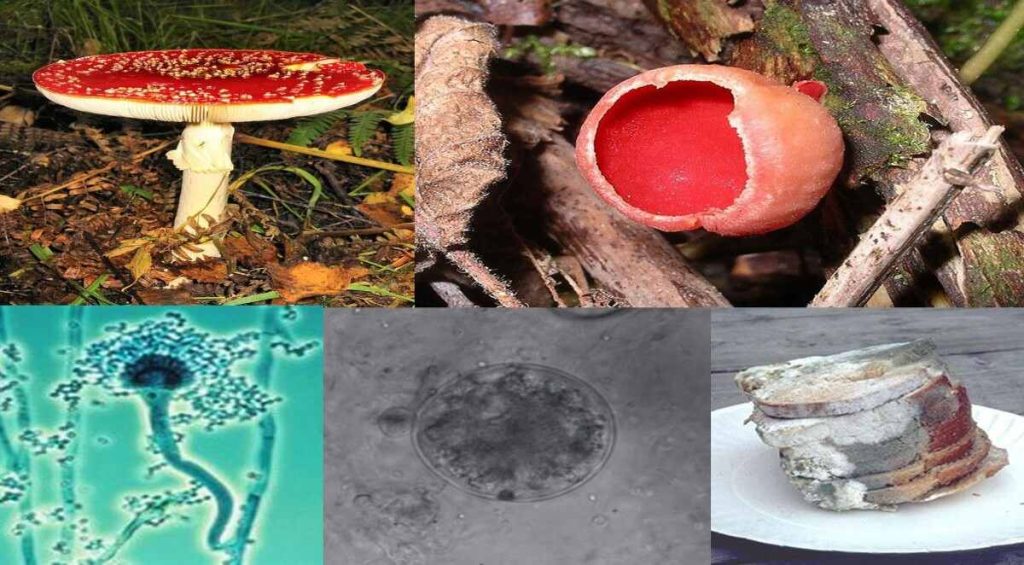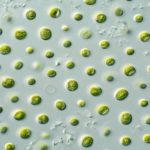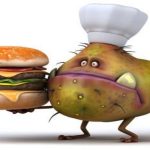Fungi can be single celled or very complex multicellular organisms. They are found in just about any habitat but most live on the land, mainly in soil or on plant material rather than in sea or fresh water. A group called the decomposers grow in the soil or on dead plant matter where they play an important role in the cycling of carbon and other elements. Some are parasites of plants causing diseases such as mildews, rusts, scabs or canker. In crops fungal diseases can lead to significant monetary loss for the farmer. A very small number of fungi cause diseases in animals. In humans these include skin diseases such as athletes’ foot, ringworm and thrush.



Types of fungi
Fungi are subdivided on the basis of their life cycles, the presence or structure of their fruiting body and the arrangement of and type of spores (reproductive or distributional cells) they produce.
The three major groups of fungi are:
- multicellular filamentous moulds
- macroscopic filamentous fungi that form large fruiting bodies. Sometimes the group is referred to as ‘mushrooms’, but the mushroom is just the part of the fungus we see above ground which is also known as the fruiting body.
- single celled microscopic yeasts
Multicellular filamentous moulds
Moulds are made up of very fine threads (hyphae). Hyphae grow at the tip and divide repeatedly along their length creating long and branching chains. The hyphae keep growing and intertwining until they form a network of threads called a mycelium. Digestive enzymes are secreted from the hyphal tip. These enzymes break down the organic matter found in the soil into smaller molecules which are used by the fungus as food.
Some of the hyphal branches grow into the air and spores form on these aerial branches. Spores are specialized structures with a protective coat that shields them from harsh environmental conditions such as drying out and high temperatures. They are so small that between 500 – 1000 could fit on a pin head.
Spores are similar to seeds as they enable the fungus to reproduce. Wind, rain or insects spread spores. They eventually land in new habitats and if conditions are right, they start to grow and produce new hyphae. As fungi can’t move they use spores to find a new environment where there are fewer competing organisms.
Macroscopic filamentous fungi
Macroscopic filamentous fungi also grow by producing a mycelium below ground. They differ from moulds because they produce visible fruiting bodies (commonly known as mushrooms or toadstools) that hold the spores. The fruiting body is made up of tightly packed hyphae which divide to produce the different parts of the fungal structure, for example the cap and the stem. Gills underneath the cap are covered with spores and a 10 cm diameter cap can produce up to 100 million spores per hour.
Yeasts
Yeasts are small, lemon-shaped single cells that are about the same size as red blood cells. They multiply by budding a daughter cell off from the original parent cell. Scars can be seen on the surface of the yeast cell where buds have broken off. Yeasts such as Saccharomyces, play an important role in the production of bread and in brewing. Yeasts are also one of the most widely used model organisms for genetic studies, for example in cancer research. Other species of yeast such asCandida are opportunistic pathogens and cause infections in individuals who do not have a healthy immune system.


